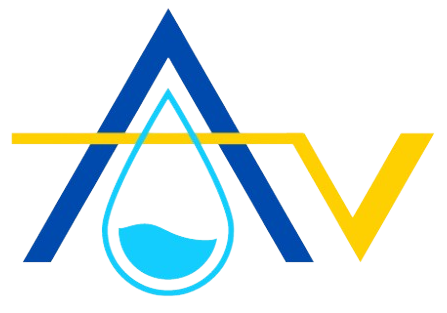21 Essential Waterproofing Tools: Professional, Safety and Basic

These are the most used 21 Waterproofing tools. These tool set include professional waterproofing tools, basic and essential safety tools for waterproofing projects.
- Waterproofing Tape
- Epoxy Injection Gun
- Heat Gun
- Seam Roller
- Mixing Paddle
- Pressure Washer
- Bucket
- Paintbrushes
- Paint Rollers
- Sponge
- Utility Knife
- Scraper
- Measuring Tape
- Spirit Level
- Caulking Gun
- Flashlight
- Spatula
- Grout Float
- Safety Gloves
- Safety Goggles
- Knee Pads

1. Waterproofing Tape
Waterproofing tape is essential tool for different types of waterproofing methods. It can be used for sealing joints, seams, and cracks in various surfaces such as roofs, walls, and foundations waterproofing. This tape makes the waterproofing task easier by providing a quick and effective solution for sealing vulnerable areas and preventing water intrusion.
Waterproofing tapes are easy to apply without the need for additional tools or equipment, are durable and long-lasting protection against moisture and leaks, and are versatile in use for both indoor and outdoor waterproofing applications.
2. Epoxy Injection Gun
An epoxy injection gun is a specialized tool used in waterproofing to inject epoxy resin into cracks, voids, or damaged areas in concrete or masonry surfaces.
Epoxy injection gun can precisely inject the epoxy into the target cracks for thorough sealing, quick and efficient repair of concrete or masonry surfaces, and enhanced durability and longevity of waterproofing solutions by addressing underlying structural issues.
This tool helps make the waterproofing task easier by providing controlled and precise application of epoxy, effectively sealing and repairing structural imperfections.
3. Heat Gun
A heat gun/gas torch is a valuable tool for sheet membrane waterproofing. Heat gun is used to activate and soften certain waterproofing materials such as PVC, EPDM, HDPE and Bituminus membranes. Heat gun helps to make the waterproofing task easier by providing controlled heat on point and allowing for precise application and shaping of materials.
Using a heat gun for waterproofing is efficient activation of materials for optimal performance, versatility in application for different waterproofing products, and enhanced durability of waterproofing by ensuring proper sealing and bonding.
4. Seam Roller
A seam roller is an essential tool for sheet membrane waterproofing such as PVC, HDPE and EPDM. Seam roller is used to firmly press and seal seams, edges, and overlaps of waterproofing membranes, tapes, or other materials while sheets are heating.
Using a seam roller enhanced the adhesion and sealing of seams, smoother and neater finish, and improved the durability and performance of the waterproofing system by reducing the risk of leaks or failures.
5. Mixing Paddle
A mixing paddle is an essential tool in waterproofing. Mixing paddles are used for blending and mixing waterproofing materials such as sealants, coatings, or adhesives.
Using mixing paddles are efficient and consistent mixing for optimal results, reduced risk of material clumping or separation, and versatility in mixing different types of waterproofing products to meet specific project requirements.
Mixing paddles helps to make the waterproofing task easier by ensuring thorough and uniform mixing, which is crucial for the proper application and performance of the materials.
6. Pressure Washer
A pressure washer is an essential tool for substrate preparation. A pressure washer is used to clean surfaces thoroughly by blasting away dirt, mold, algae, and old coatings with high-pressure water.
Pressure washer can effectively deep clean the substrate, saving time and labor compared to manual cleaning methods, and enhancing the longevity and performance of the waterproofing application by ensuring a pristine surface.
A pressure washer makes the waterproofing task easier by ensuring a clean and debris-free surface, which is crucial for the proper adhesion of waterproofing products.
7. Bucket
A bucket is a fundamental tool in waterproofing. Bucket it used for mixing, carrying, and applying various waterproofing materials such as sealants, coatings, or adhesives. This tool helps make the waterproofing task easier by providing a convenient and portable way to transport and handle materials on-site. You can use plastic or metal buckets as per the requirements. You had better use plastic buckets when you use acidic compounds like ETCH on the substrate.

Using a bucket for waterproofing projects are always efficient organization and storage of materials, easy mixing of components for consistent application, and versatility in handling different types of waterproofing products.
8. Paintbrushes
Paintbrushes are essential for waterproofing projects. Paint brushes are often used for applying sealants, coatings, or waterproofing membranes to surfaces. Paint brushes help to make the waterproofing task easier by providing precision and control during application, ensuring even coverage and proper adhesion the waterproofing membrane on the substrate.
Paint brushes can be used for precise application in tight or intricate areas, ability to reach corners and edges effectively, and versatility in handling different types of waterproofing materials such as paints, primers, or sealants.
9. Paint Rollers
Paint rollers are efficient tools in waterproofing. Paint rollers are commonly used for applying coatings, sealants, or waterproofing membranes to large surfaces such as walls, floors, or roofs.
Paint brushes can be used for faster application on large areas, smooth and even finish for improved waterproofing performance, and versatility in handling various types of waterproofing materials such as paints, primers, or coatings.
Paint rollers help to make the waterproofing task easier by providing quick and uniform coverage, reducing application time and labor.
10. Sponge
A sponge is a versatile tool in waterproofing projects. A sponge is commonly used for applying sealants, coatings, or waterproofing membranes onto surfaces.
A sponge can spread the liquid uniformly, with minimal wastage of materials and ease of use. Sponges are especially suitable for smaller or intricate areas where brushes or rollers are impossible to reach.
Sponge helps to make the waterproofing task easier by evenly spreading the waterproofing material, ensuring proper coverage and adhesion.
11. Utility Knife
A utility knife is a versatile tool in waterproofing. Utiliy knife is commonly used for cutting materials such as membranes, tapes, and flashing during installation. Utility knife helps to make the waterproofing task easier by providing precise and clean cuts, ensuring proper fitting and sealing of waterproofing components. Utility knife increases the accuracy in cutting materials to size, efficiency in trimming excess materials, and versatility for various cutting needs in waterproofing projects.
12. Scraper
A scraper is an essential tool for substrate preparation in waterproofing. It is used to remove old sealant, paint, dirt, and other debris from surfaces before applying new waterproofing materials.
Using scrapers efficiently removes stubborn materials on the substrate, improves surface preparation for optimal waterproofing application, and saves time by quickly clearing large areas.
Scraper helps to make the waterproofing task easier by providing a clean, smooth surface, ensuring better adhesion of waterproofing products to the substrate.
13. Measuring Tape
A measuring tape is a fundamental tool in waterproofing. Measuring tape is used for accurately measuring dimensions such as lengths, widths, and heights of surfaces and materials.
Using a measuring tape for waterproofing increase the accuracy in measurements for efficient material usage, ability to plan and execute waterproofing projects with precision, and versatility in measuring various surfaces and dimensions on-site.
Measuring tape helps make the waterproofing task easier by ensuring precise calculations and cuts, leading to proper fitting and installation of waterproofing components.
14. Spirit Level
A spirit level, also known as a bubble level, is a critical tool in waterproofing used to ensure that surfaces, such as floors or walls, are horizontal or vertical during installation. Spirits level helps to ensur the level and plumb surfaces for optimal waterproofing performance, preventing water pooling or uneven application, and enhancing the overall aesthetics and functionality of the waterproofing system.
15. Caulking Gun
A caulking gun is an essential tool in waterproofing. A caulking gun is used to apply sealants, caulks, and adhesives to joints, cracks, and surface gaps. This tool helps to apply sealants and caulk on the substrate uniformly. It ensures the proper sealing and protection against water intrusion.
Using a caulking gun is an efficient and neat application, reduces wastage of sealant, and enhances the durability of waterproofing by sealing vulnerable areas effectively.
16. Flashlight
A flashlight is a useful tool when conducting waterproofing projects in low light areas. It helps to make the waterproofing task easier by providing illumination to inspect surfaces, identify potential leaks or defects, and ensure the accurate application of waterproofing materials.
Flash lights can improve the visibility for detailed inspections, enhance accuracy in applying waterproofing products, and increase safety by illuminating work areas to prevent accidents or errors.
17. Spatula
A spatula is a versatile tool in waterproofing, often used for spreading sealants, adhesives, or coatings onto surfaces with precision and control.
Spatial can be used for precise application for detailed work, ability to handle various materials such as caulks, putties, or fillers, and versatility in achieving different textures or thicknesses for specific waterproofing needs.
Spatula helps to make the waterproofing task easier by ensuring even application and smooth finishes, especially in tight or hard-to-reach areas.
18. Grout Float
A grout float is a specialized tool commonly used in waterproofing for applying and smoothing grout or mortar into joints, seams, or gaps between tiles or other surfaces.
Grout float can be used for precise application into narrow spaces, smooth and even finish for professional results, and reduced cleanup time by minimizing excess grout or mortar spillage.
This tool helps make the waterproofing task easier by providing efficient and uniform application of grout, ensuring proper sealing and waterproofing of tiled surfaces.
19. Safety Gloves
Safety gloves are an essential safety tool for waterproofing projects. Safety gloves help with waterproofing tasks by providing a secure grip and enhancing precision and control when handling tools and materials.
Safety gloves ensure the user's safety by preventing skin contact with potentially hazardous substances, reducing the risk of chemical burns or skin irritations.
Safety gloves improve the overall efficiency and productivity of the waterproofing process.

20. Safety Goggles
Safety goggles are essential for waterproofing projects to protect the eyes from splashes of harmful chemicals, dust, and debris during the surface preparation process and membrane laying process.
Safety goggles provide a barrier against chemical splashes, reducing the risk of eye irritation or injury. They enhance visibility by preventing dust and debris from entering the eyes, which is vital for precision work.
Safety goggles make the waterproofing task easier by ensuring clear vision and preventing eye injuries, allowing workers to focus on their tasks without the risk of accidents.
21. Knee Pads
Knee pads are an essential safety tool in waterproofing. Knee pads protect the knees when working on floors, roofs, or other hard surfaces that require prolonged kneeling on the sheet membrane laying.
Knee pads enhance comfort during extended periods of kneeling, prevent knee injuries, protect the membranes from damage and increase productivity due to reduced physical strain.
These pads make the waterproofing task easier by providing cushioning and support, reducing discomfort and strain on the knees.
What is Sheet Membrane Waterproofing?
The sheet membrane waterproofing are commonly named as loose laid waterproofing . The most used sheet membrane waterproofing are PVC, EPDM, HDPE, and Bituminous waterproofing membranes. These sheet membrane waterproofing should be connected edge to edge in order to make a waterproof barrier. PVC, EPDM, and HDPE can be connected by heating or melting using the heat gun, while bituminous membranes can be connected using a gas torch. Sheet membrane waterproofing is extremely durable, UV resistant, heat resistant, and flexible.
Can Cementitious Waterproofing Be Applied to Both Interior and Exterior Waterproofing?
Yes, cementitious waterproofing can be applied for both interior and exterior waterproofing because cementitious waterproofing creates a crystalline bond with lime particles in the concrete mixture and builds a waterproof barrier. Hence it can be used for water tank waterproofing as well as foundation exterior wall waterproofing to prevent water from leaking.
